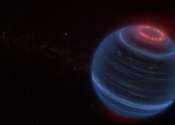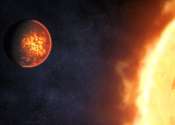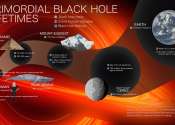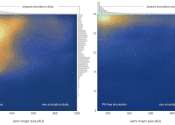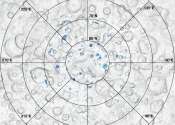A planet (from Greek πλανήτης, from the verb πλανώμαι planōmai I wander), is a celestial body orbiting a star or stellar remnant that is massive enough to be rounded by its own gravity, is not massive enough to cause thermonuclear fusion, and has cleared its neighbouring region of planetesimals.[a]
The term planet is ancient, with ties to history, science, myth, and religion. The planets were originally seen by many early cultures as divine, or as emissaries of the gods. Even today, many people believe in astrology, which holds that the movement of the planets affects people's lives, although such a causation is rejected by the scientific community. As scientific knowledge advanced, human perception of the planets changed, incorporating a number of disparate objects. Even now there is no uncontested definition of what a planet is. In 2006, the IAU officially adopted a resolution defining planets within the Solar System. This definition has been both praised and criticized, and remains disputed by some scientists.
The planets were thought by Ptolemy to orbit the Earth in deferent and epicycle motions. Though the idea that the planets orbited the Sun had been suggested many times, it was not until the 17th century that this view was supported by evidence from the first telescopic astronomical observations, performed by Galileo Galilei. By careful analysis of the observation data, Johannes Kepler found the planets' orbits to be not circular, but elliptical. As observational tools improved, astronomers saw that, like Earth, the planets rotated around tilted axes, and some share such features as ice-caps and seasons. Since the dawn of the Space Age, close observation by probes has found that Earth and the other planets share characteristics such as volcanism, hurricanes, tectonics, and even hydrology. Since 1992, through the discovery of hundreds of extrasolar planets (planets around other stars), scientists are beginning to understand that planets throughout the Milky Way Galaxy share characteristics in common with our own.
Planets are generally divided into two main types: large, low-density gas giants, and smaller, rocky terrestrials. Under IAU definitions, there are eight planets in the Solar System. In order from the Sun, they are the four terrestrials, Mercury, Venus, Earth, and Mars, then the four gas giants, Jupiter, Saturn, Uranus, and Neptune. The Solar System also contains at least five dwarf planets: Ceres, Pluto (originally classified as the Solar System's ninth planet), Makemake, Haumea and Eris. With the exception of Mercury, Venus, Ceres and Makemake, all of these are orbited by one or more natural satellites.
As of June 2009, there are 353 known extrasolar planets, ranging from the size of gas giants to that of terrestrial planets.


